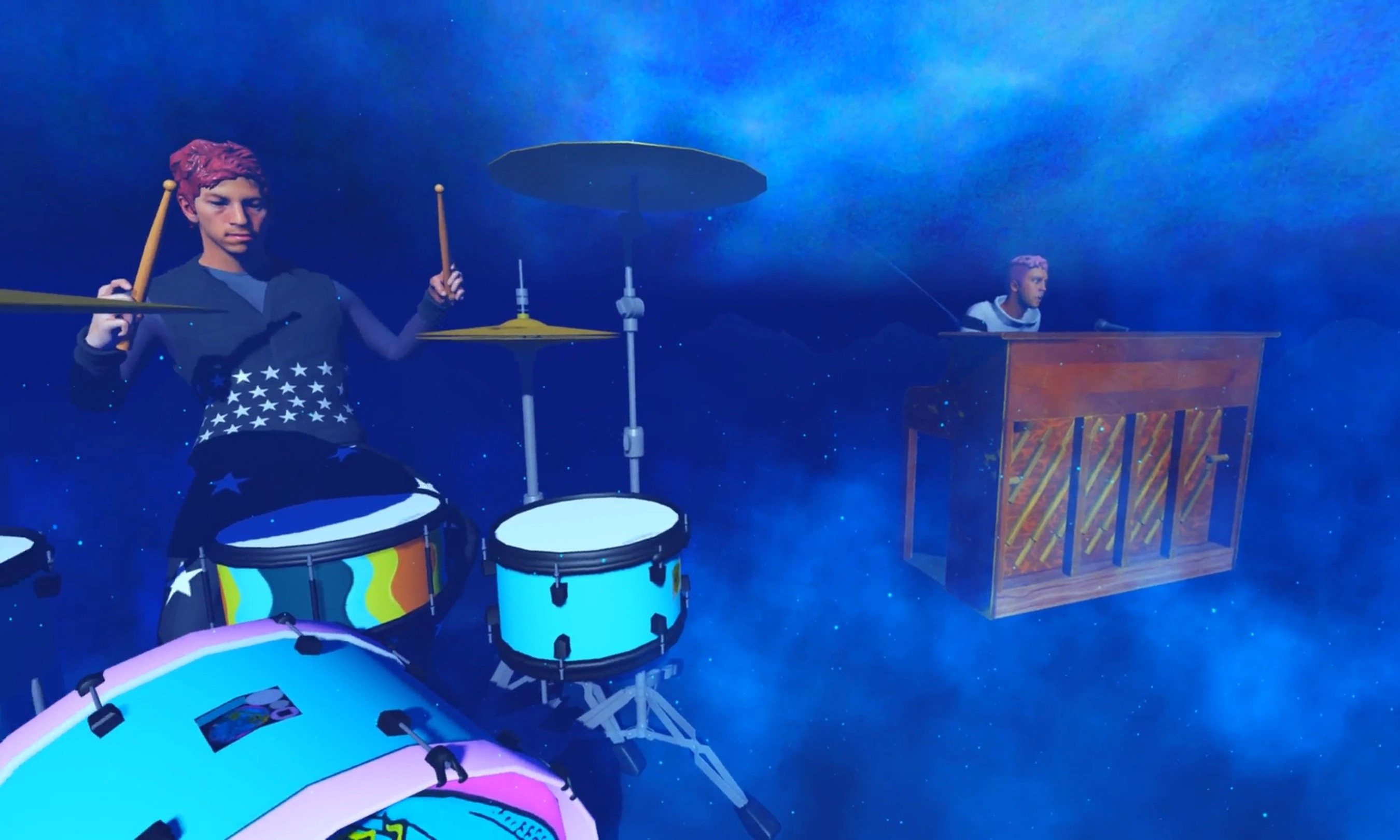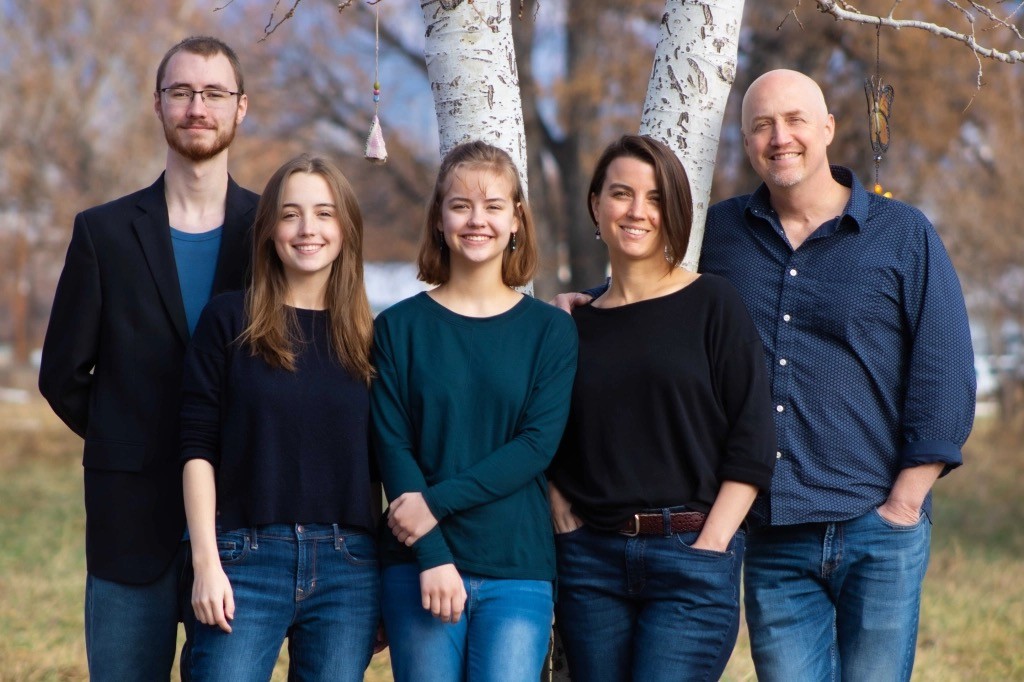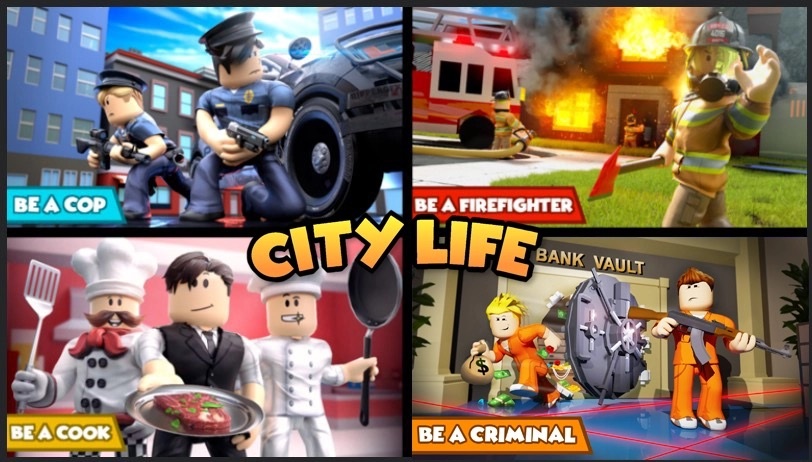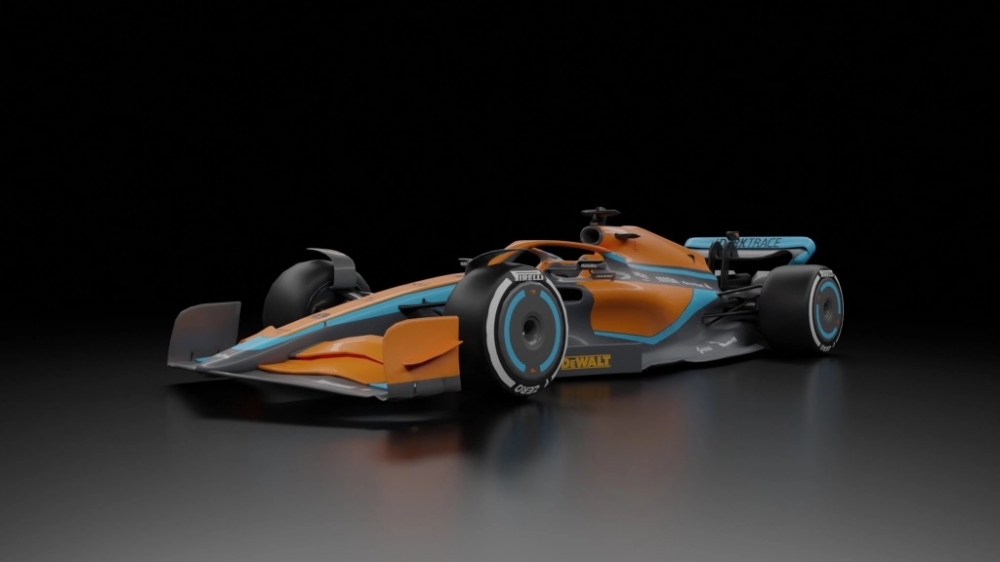
几年前,一位娱乐行业的客户找到马库斯·霍姆斯特姆和他位于斯德哥尔摩的游戏工作室Gang Sweden,委托其为Roblox平台创建一些内容。Roblox平台是一个元宇宙风格的游戏和娱乐合集,使用方块图像,很受孩子们欢迎。
这次任务听起来毫无难度:霍姆斯特姆团队的成员在所谓的3A游戏制作方面拥有许多经验,有些人曾参与过一些主流游戏大作的开发,例如《重返德军总部》(Return to Castle Wolfenstein)和《战锤:末世鼠疫》(Warhammer: Vermintide)等,而Roblox上的很多内容都是由该平台自己的社区打造。霍姆斯特姆回忆道:“我们以为会非常顺利,因为竞争很少。”
结果却大相径庭。霍姆斯特姆承认:“项目彻底失败。没有人喜欢我们的游戏。”Gang Sweden通过这次惨痛教训了解到,Roblox是一个奇特的平台。
对于新手而言,该工作室的游戏主要以目标和竞争为导向,就像是一款纯粹的游戏。但许多青少年用户使用Roblox平台是为了社交,几乎将其当成了社交网络;事实证明,许多人在元宇宙中随意游荡。与此同时,Gang的游戏却很复杂,许多内容需要用户自己探索。但Roblox的年轻用户更喜欢根据清晰的指令和活动,亲手创建内容。该游戏工作室意识到,Roblox的受众之所以使用该平台,是因为它能满足用户的期待。
而且这批受众不容忽视:2022年第1季度,平均每天有5,410万名活跃用户,在该平台共花费了118亿个小时。许多人花费用美元购买的平台货币Robux,获取体验和数字物品,用于个性化改造自己的虚拟形象或虚拟居住空间。最值得关注的是,有超过1,000万Roblox用户曾为其他用户创建体验和游戏,事实上这类用户的数量接近3,000万。许多用户通过自己的作品获得收入,2021年创作者的收入总计达到5.38亿美元。虽然他们大都是在平台上成长起来的年轻人,但这些用户/开发者对于Roblox生态系统的重要性不容忽视。他们实际上就是生态系统的组成部分。
虽然Roblox在社区培养方面取得了令人瞩目的成果,但该公司依旧未能实现盈利。2021年,该公司收入19.2亿美元,亏损约4.9亿美元。随着疫情带来的热潮出现降温迹象,华尔街对Roblox的故事失去了热情;其股价较11月的最高点下跌超过一半。
尽管如此,Gang等公司以及大批自主创作者并没有因此退缩,他们继续在该平台上积极创作。事实上,Roblox的生态系统变得更加稳健:一些独立开发者正在发展成专业工作室,而有经验的游戏制作商正在成为Roblox专家,并且有些获得了风险投资。

Gang Sweden目前仅专注于为Roblox平台开发游戏。工作室有67名员工,已经开发了超过15款游戏,包括每天有数百万玩家在线的诚意大作《强人模拟器》(Strongman Simulator)(在游戏中,用户进入一个类似于健身房的虚拟环境,通过各种动作获取力量和能量分)。其游戏的收入来源是出售升级和虚拟服装与装备等。公司还会为客户创建定制环境,如Vans和超级跑车制造商迈凯伦(McLaren)等。
还有许多工作室在该平台上也采取了类似模式。从Hello Kitty咖啡厅到Chipotle的“玉米饼制作”游戏再到Spotify的“音乐主题岛屿”以及“古驰小镇”,这些由品牌商赞助的体验成为该生态系统的常规特征。(这种变化也受到了广告监管机构的批评。)
结果就是,Gang Sweden成为成功在Roblox上找到盈利途径的许多第三方之一。霍姆斯特姆表示,Gang Sweden已实现盈利,收入快速增长。
问题是,Roblox能否也找到盈利的途径。
Roblox似乎最近才走红,它在2021年3月上市,但实际上这家公司成立于2004年。更新鲜的是其当前的经营模式。Roblox的经营模式经过全面进化,致力于鼓励第三方开发者,他们可以是在卧室里业余创作的富有创意的青少年,也可能是有大量资深游戏业者的工作室。现在注册一个Roblox账户,你会看到丰富多彩的选择,帮助你探索其元宇宙。但由Roblox自身创作的选择几乎为零。
当然你也可以说Roblox创造了一切。设计恰当的数字建造工具,制定有效的激励措施,积极培养并不断壮大开发者社区,本身也是一种创意。而且这个过程经过了数年试验和方向调整。
Roblox高级主管兼全球开发者社区总监贾斯汀·苏泽表示,最早的Roblox就像是一款“学习工具”。作为一款物理模拟器,它吸引了12至14岁“有怪癖的孩子”(苏泽将其作为一种称赞),儿童可以通过其中的数字模块创作物品和空间。Roblox尝试过广告模式,但该公司最终认为,这种模式与正在成形的用户社区格格不入。
相反,Roblox加大了对社区的培养,并且相信人们会在元宇宙中消费。Roblox实际上采用了现在已经众所周知的“创作者经济”模式,开始更积极地鼓励开发者在平台上开发可变现的体验,并从中赚取抽成。当一名Roblox用户为其虚拟形象购买装备装饰虚拟空间时,公司会收取约30%的“平台服务费”。
2015年,Roblox启动了所谓的“加速器”计划,通过新人训练营的形式,帮助精心选拔出的开发者成长。这些开发者都诞生于该平台。该计划目前每年为约40名开发者提供专业培训,以及与Roblox的工程师和其他内部人士直接沟通的渠道。公司最初鼓励开发某些类型的游戏和体验,但很快改变策略,开始支持开发者天马行空地进行创作。苏泽坚称:“我们只是给开发者提供一套工具。我们并不关心他们用它来盖房子、造窝棚还是做一只鞋子,这一切都由开发者自己决定。”(事实上,Roblox后来澄清公司对开发者有一些限制:公司制定了精心设计的社区指导方针和家长控制设置,以保证平台对年轻用户的安全性和适宜性。)最近,Roblox启动了一项更加开放的“Game Fund”计划,将向开发者发放资助共计2,500万美元。
有些加速器计划的毕业生已经创办了自己的工作室。Simple Games的创始人内森·克莱门斯就是其中之一。内森今年21岁,他的合伙人包括他的两个妹妹内奥米(18岁)和瑞秋(15岁)以及父母。他们与一个外包程序员团队合作,开发了约15款游戏,包括热门角色扮演游戏《城市生活》(City Life),总收入达到小七位数。(克莱门斯没有透露详细数据,但他表示Simple Games向慈善事业捐款超过15万美元。)
克莱门斯坦言:“我从来没有把Roblox当做游戏。”事实上,他从来都不是一名游戏玩家。但他在约14岁的时候发现了这个平台,更准确地说,发现了Roblox Studio建造工具。当时他使用谷歌SketchUp等程序,已经学会了3D建模和计算机辅助设计(CAD)渲染。他可以利用这些技能,通过开发Roblox游戏赚钱。后来他发现可以与程序员合作开发自己的游戏。他说道:“我们从那时候才了解到市场规模之庞大。”
内森的父母杰夫和香侬一直在关注着他,随着他的事业不断壮大,他们开始直接参与,主要负责业务方面。内奥米在15岁时加入工作室开发自己的项目;她的最新作品《分层服装》(Layered Clothing)是一款虚拟化妆比赛游戏,利用了Roblox一项优化虚拟形象装扮结果的新功能。瑞秋在12岁左右加入工作室。她喜欢数字艺术,精通Procreate等程序。


内森形容参加加速器计划的经历对他具有颠覆性的意义。18岁的时候,在Roblox的资助下,他在加州用三个月时间,通过课程和报告,学习如何充分利用该平台,学习的内容涵盖了交互设计到财务等方方面面。他说:“那段时间有些混乱,但也让我觉得非常神奇。在那之后,我开始全身心投入到Roblox平台。”
像内森一样的人大有人在。事实上,Roblox生态系统经过许多年循序渐进的缓慢成长,在过去两年似乎已经达到了创作者经济公司渴望的良性飞轮效应:越多人能够通过在平台上开发作品维持生计甚至成为百万富翁,平台就能吸引越多用户;随着用户参与度的提升,平台对于开发者就更有吸引力。目前,Roblox文化的热度超过了平台上的实际参与度,有以Roblox为导向的YouTube用户和出版物,以及Twitch解说用户,公司还举办了年度开发者活动,帮助创作者拓展人脉,建立新的关系(达成更多交易)。
既然如此,为什么Roblox的收入依旧为负?Roblox首席商务官克雷格·多纳托认为,这个问题是错误的。他说道:“我们在内部不会讨论收入和盈利能力。”相反,公司关注的是“用户消费”和现金流量。当用户购买平台货币Robux时,Roblox可收到现金。(成本取决于用户购买的数量以及是否选择“订阅”服务,但用户用大约10美元基本可以购买800枚Robux。订阅服务会每个月为用户发送新的Robux账单。)
用户通常会用这些Robux购买体验或虚拟物品,收入被分摊到用户购买物品的整个生命周期;例如一件虚拟衬衫的价格可能在25个月里进行摊销。多纳托表示,结果就是虽然这种收入增长缓慢,但公司实现了正向现金流:“我们银行账户里的资金在不断增多而不是减少。”
质疑者提到了自疫情封锁逐步解除以来,Roblox数据的不断下滑:总预估用户消费较一年前下降了两个百分点,用户平均消费额也有所下滑。分析师下调了对该公司的收入预估,甚至有人公开表示看跌该公司。例如,高盛(Goldman Sachs)分析师埃里克·谢里登最近将对该公司股票的前景评级从买入下调至中立,认为公司短期内存在用户增长持续放缓的可能;美国银行(Bank of America)分析师奥马尔·德苏基最近大幅下调了Roblox股票的目标价位。
但Roblox似乎认为疫情期间的大幅增长和后续的降温是公司增长过程中的反常时刻。而且没有任何迹象表明公司将改变竭尽所能促进增长的策略,例如投资平台、扩充服务器以及不多扩大对创作者/内容的飞轮效应等,这也是最重要的一点。公司真正的想法是,最终有足够多的用户在平台上进行足够多的消费,使“用户消费”带来的收入能够超过平台扩张和维护的成本,从而实现传统意义上的盈利。(就连一些Roblox的华尔街批评者也看好公司的长期前景,尤其是对于坚信元宇宙潜力的人而言。)
在这方面,该公司有两条策略尤其值得关注。一条策略是在2019年推出的“基于参与度”向开发者付费的模式。新手创作者可能需要时间积累足够多的受众,才能真正将一款游戏或一种体验变现。而基于参与度的付费可以作为对创作者的激励,或者权宜之计。开发者甚至不需要主动争取,资金会自动出现在他们的Robux账户中。多纳托表示:“我们希望开发者能够凭借投入的时间获得收入。”2021年,Roblox共发放了8,610万美元的参与度付费,约占向开发者付费总额的16%。
其次,Roblox对于平台上的品牌渗透,似乎选择了一种中立的态度。这是非常惊人的,因为品牌渗透不仅实实在在发生了,而且其发生的频率和覆盖范围将不断扩大,并将有更大的变现潜力。但Roblox目前似乎并不打算直接与品牌商合作;相反,公司鼓励品牌商与开发者合作,无论是像克莱门斯家族一样从平台上成长起来的开发者,还是Gang这样的外部专业开发者。

多纳托表示,让这种动态在生态系统内自由发挥,使品牌体验根据自身的优缺点经历起起落落,比建立更直接的合作伙伴关系更容易。事实上,作为开发者负责人的苏泽表示,《收养我吧》(Adopt Me)(Roblox上最热门的游戏之一,玩家在游戏中可以照顾和交换虚拟宠物)这款游戏中有许多与迪士尼(Disney)有关的品牌“植入”。他表示,Roblox更喜欢这种模式,即有品牌参与,但公司不担任直接中间人。多纳托也表示:“我们只是努力创建一个公平的竞争环境。”
公司还有第三条策略,虽然到目前为止产生的影响较小,但可能对Roblox的未来具有至关重要的意义。苏泽指出,Roblox用户的平均年龄正在慢慢小幅增长:52%的用户目前超过13岁。等着用户年龄增长,或者苏泽所说的“年龄不可知论”,成为公司的目标。然后公司可以鼓励用户尝试瑜伽空间等,或者现实的旅行导向体验。甚至演唱会和DJ表演等数字活动也能吸引年龄稍大的青少年用户。(公司表示17至24岁的年轻人是增长最快的用户群体。)
公司重视这一点的理由显而易见:作为一家公司,Roblox依赖用户消费,而要依靠儿童受众实现这个目标是一项复杂的挑战。未成年用户需要父母参与注册Robux账户,但除此之外,成年人的监督参差不齐,留下了发生可疑交易的可能性。4月,非营利组织广告中的真相(Truth In Advertising)向联邦贸易委员会(Federal Trade Commission)投诉,指责Roblox“通过多种方式允许将广告与有机内容秘密关联。”与此同时,该平台在最近的一次流行文化事件中似乎扮演了不幸的角色。金·卡戴珊6岁的儿子最近在Roblox上偶然发现的一条内容,提到了卡戴珊和前男友的性爱录像带。(据报道,该公司删除了提及这个录像带的“体验”,并封杀了其创作者。)骗人的机器人程序也是一个问题。Roblox为一项用于发现假冒虚拟物品的技术提交了专利申请。
即使是合法销售也会引发人们的担忧,因为销售的对象是未成年消费者,他们的大脑尚未发育完全。有些活动有意吸引人们在该平台上大量消费。据媒体报道,Lil Nas X在Roblox上举办的一场活动的数字商品销售额接近1,000万美元。某些稀有物品的价格高达数千枚Robux。这些物品之所以稀有是因为其在特定游戏中的实用性,或者因为其身份问题,将其稀缺性与现实世界的价值挂钩。
作家、游戏设计师和批评家以及华盛顿大学圣路易斯分校(Washington University in St. Louis)传媒与计算机科学教授伊恩·博格斯特表示:“在Roblox上有很多欺骗消费者的机会,尤其是儿童。”比如迫使消费者购买“礼物”,或者以低于真实价值的价格卖掉他们的数字物品等。
但博格斯特发现,从《口袋妖怪》(Pokémon)狂热到《堡垒之夜》(Fortnite)引发的担忧,这类暴力游戏在家长当中造成的恐慌,并没有对Roblox产生影响。或许这与Roblox方方正正、毫无威胁甚至有些笨重的审美有关。博格斯特表示:“或许家长认为:‘它可能不是很重要。因为重要的东西应该看起来更精致。”
Roblox提到其内容审查工作称,公司在内容审查方面付出了大量努力,这也是公司的主要支出项目之一。此外,笔者采访过的Roblox高管和开发者都提到了平台的“社区”环境,因为这是一个基本上由用户创造的世界,维持一个诚信、安全的环境符合用户的既得利益。
Roblox最终也需要维持这样一个环境:公司几乎在所有层面,都将未来寄托于其培养的生态系统的创造力、敏锐度和道德原则。对传统收益不屑一顾这种策略并不能持久,而且华尔街似乎正在失去耐心。但正如多纳托所说,这家有18年历史的公司相信,现在强劲的现金流量未来将演变成利润。“我们才刚刚起步。”(财富中文网)
翻译:刘进龙
审校:汪皓
几年前,一位娱乐行业的客户找到马库斯·霍姆斯特姆和他位于斯德哥尔摩的游戏工作室Gang Sweden,委托其为Roblox平台创建一些内容。Roblox平台是一个元宇宙风格的游戏和娱乐合集,使用方块图像,很受孩子们欢迎。
这次任务听起来毫无难度:霍姆斯特姆团队的成员在所谓的3A游戏制作方面拥有许多经验,有些人曾参与过一些主流游戏大作的开发,例如《重返德军总部》(Return to Castle Wolfenstein)和《战锤:末世鼠疫》(Warhammer: Vermintide)等,而Roblox上的很多内容都是由该平台自己的社区打造。霍姆斯特姆回忆道:“我们以为会非常顺利,因为竞争很少。”
结果却大相径庭。霍姆斯特姆承认:“项目彻底失败。没有人喜欢我们的游戏。”Gang Sweden通过这次惨痛教训了解到,Roblox是一个奇特的平台。
对于新手而言,该工作室的游戏主要以目标和竞争为导向,就像是一款纯粹的游戏。但许多青少年用户使用Roblox平台是为了社交,几乎将其当成了社交网络;事实证明,许多人在元宇宙中随意游荡。与此同时,Gang的游戏却很复杂,许多内容需要用户自己探索。但Roblox的年轻用户更喜欢根据清晰的指令和活动,亲手创建内容。该游戏工作室意识到,Roblox的受众之所以使用该平台,是因为它能满足用户的期待。
而且这批受众不容忽视:2022年第1季度,平均每天有5,410万名活跃用户,在该平台共花费了118亿个小时。许多人花费用美元购买的平台货币Robux,获取体验和数字物品,用于个性化改造自己的虚拟形象或虚拟居住空间。最值得关注的是,有超过1,000万Roblox用户曾为其他用户创建体验和游戏,事实上这类用户的数量接近3,000万。许多用户通过自己的作品获得收入,2021年创作者的收入总计达到5.38亿美元。虽然他们大都是在平台上成长起来的年轻人,但这些用户/开发者对于Roblox生态系统的重要性不容忽视。他们实际上就是生态系统的组成部分。
虽然Roblox在社区培养方面取得了令人瞩目的成果,但该公司依旧未能实现盈利。2021年,该公司收入19.2亿美元,亏损约4.9亿美元。随着疫情带来的热潮出现降温迹象,华尔街对Roblox的故事失去了热情;其股价较11月的最高点下跌超过一半。
尽管如此,Gang等公司以及大批自主创作者并没有因此退缩,他们继续在该平台上积极创作。事实上,Roblox的生态系统变得更加稳健:一些独立开发者正在发展成专业工作室,而有经验的游戏制作商正在成为Roblox专家,并且有些获得了风险投资。
Gang Sweden目前仅专注于为Roblox平台开发游戏。工作室有67名员工,已经开发了超过15款游戏,包括每天有数百万玩家在线的诚意大作《强人模拟器》(Strongman Simulator)(在游戏中,用户进入一个类似于健身房的虚拟环境,通过各种动作获取力量和能量分)。其游戏的收入来源是出售升级和虚拟服装与装备等。公司还会为客户创建定制环境,如Vans和超级跑车制造商迈凯伦(McLaren)等。
还有许多工作室在该平台上也采取了类似模式。从Hello Kitty咖啡厅到Chipotle的“玉米饼制作”游戏再到Spotify的“音乐主题岛屿”以及“古驰小镇”,这些由品牌商赞助的体验成为该生态系统的常规特征。(这种变化也受到了广告监管机构的批评。)
结果就是,Gang Sweden成为成功在Roblox上找到盈利途径的许多第三方之一。霍姆斯特姆表示,Gang Sweden已实现盈利,收入快速增长。
问题是,Roblox能否也找到盈利的途径。
Roblox似乎最近才走红,它在2021年3月上市,但实际上这家公司成立于2004年。更新鲜的是其当前的经营模式。Roblox的经营模式经过全面进化,致力于鼓励第三方开发者,他们可以是在卧室里业余创作的富有创意的青少年,也可能是有大量资深游戏业者的工作室。现在注册一个Roblox账户,你会看到丰富多彩的选择,帮助你探索其元宇宙。但由Roblox自身创作的选择几乎为零。
当然你也可以说Roblox创造了一切。设计恰当的数字建造工具,制定有效的激励措施,积极培养并不断壮大开发者社区,本身也是一种创意。而且这个过程经过了数年试验和方向调整。
Roblox高级主管兼全球开发者社区总监贾斯汀·苏泽表示,最早的Roblox就像是一款“学习工具”。作为一款物理模拟器,它吸引了12至14岁“有怪癖的孩子”(苏泽将其作为一种称赞),儿童可以通过其中的数字模块创作物品和空间。Roblox尝试过广告模式,但该公司最终认为,这种模式与正在成形的用户社区格格不入。
相反,Roblox加大了对社区的培养,并且相信人们会在元宇宙中消费。Roblox实际上采用了现在已经众所周知的“创作者经济”模式,开始更积极地鼓励开发者在平台上开发可变现的体验,并从中赚取抽成。当一名Roblox用户为其虚拟形象购买装备装饰虚拟空间时,公司会收取约30%的“平台服务费”。
2015年,Roblox启动了所谓的“加速器”计划,通过新人训练营的形式,帮助精心选拔出的开发者成长。这些开发者都诞生于该平台。该计划目前每年为约40名开发者提供专业培训,以及与Roblox的工程师和其他内部人士直接沟通的渠道。公司最初鼓励开发某些类型的游戏和体验,但很快改变策略,开始支持开发者天马行空地进行创作。苏泽坚称:“我们只是给开发者提供一套工具。我们并不关心他们用它来盖房子、造窝棚还是做一只鞋子,这一切都由开发者自己决定。”(事实上,Roblox后来澄清公司对开发者有一些限制:公司制定了精心设计的社区指导方针和家长控制设置,以保证平台对年轻用户的安全性和适宜性。)最近,Roblox启动了一项更加开放的“Game Fund”计划,将向开发者发放资助共计2,500万美元。
有些加速器计划的毕业生已经创办了自己的工作室。Simple Games的创始人内森·克莱门斯就是其中之一。内森今年21岁,他的合伙人包括他的两个妹妹内奥米(18岁)和瑞秋(15岁)以及父母。他们与一个外包程序员团队合作,开发了约15款游戏,包括热门角色扮演游戏《城市生活》(City Life),总收入达到小七位数。(克莱门斯没有透露详细数据,但他表示Simple Games向慈善事业捐款超过15万美元。)
克莱门斯坦言:“我从来没有把Roblox当做游戏。”事实上,他从来都不是一名游戏玩家。但他在约14岁的时候发现了这个平台,更准确地说,发现了Roblox Studio建造工具。当时他使用谷歌SketchUp等程序,已经学会了3D建模和计算机辅助设计(CAD)渲染。他可以利用这些技能,通过开发Roblox游戏赚钱。后来他发现可以与程序员合作开发自己的游戏。他说道:“我们从那时候才了解到市场规模之庞大。”
内森的父母杰夫和香侬一直在关注着他,随着他的事业不断壮大,他们开始直接参与,主要负责业务方面。内奥米在15岁时加入工作室开发自己的项目;她的最新作品《分层服装》(Layered Clothing)是一款虚拟化妆比赛游戏,利用了Roblox一项优化虚拟形象装扮结果的新功能。瑞秋在12岁左右加入工作室。她喜欢数字艺术,精通Procreate等程序。
内森形容参加加速器计划的经历对他具有颠覆性的意义。18岁的时候,在Roblox的资助下,他在加州用三个月时间,通过课程和报告,学习如何充分利用该平台,学习的内容涵盖了交互设计到财务等方方面面。他说:“那段时间有些混乱,但也让我觉得非常神奇。在那之后,我开始全身心投入到Roblox平台。”
像内森一样的人大有人在。事实上,Roblox生态系统经过许多年循序渐进的缓慢成长,在过去两年似乎已经达到了创作者经济公司渴望的良性飞轮效应:越多人能够通过在平台上开发作品维持生计甚至成为百万富翁,平台就能吸引越多用户;随着用户参与度的提升,平台对于开发者就更有吸引力。目前,Roblox文化的热度超过了平台上的实际参与度,有以Roblox为导向的YouTube用户和出版物,以及Twitch解说用户,公司还举办了年度开发者活动,帮助创作者拓展人脉,建立新的关系(达成更多交易)。
既然如此,为什么Roblox的收入依旧为负?Roblox首席商务官克雷格·多纳托认为,这个问题是错误的。他说道:“我们在内部不会讨论收入和盈利能力。”相反,公司关注的是“用户消费”和现金流量。当用户购买平台货币Robux时,Roblox可收到现金。(成本取决于用户购买的数量以及是否选择“订阅”服务,但用户用大约10美元基本可以购买800枚Robux。订阅服务会每个月为用户发送新的Robux账单。)
用户通常会用这些Robux购买体验或虚拟物品,收入被分摊到用户购买物品的整个生命周期;例如一件虚拟衬衫的价格可能在25个月里进行摊销。多纳托表示,结果就是虽然这种收入增长缓慢,但公司实现了正向现金流:“我们银行账户里的资金在不断增多而不是减少。”
质疑者提到了自疫情封锁逐步解除以来,Roblox数据的不断下滑:总预估用户消费较一年前下降了两个百分点,用户平均消费额也有所下滑。分析师下调了对该公司的收入预估,甚至有人公开表示看跌该公司。例如,高盛(Goldman Sachs)分析师埃里克·谢里登最近将对该公司股票的前景评级从买入下调至中立,认为公司短期内存在用户增长持续放缓的可能;美国银行(Bank of America)分析师奥马尔·德苏基最近大幅下调了Roblox股票的目标价位。
但Roblox似乎认为疫情期间的大幅增长和后续的降温是公司增长过程中的反常时刻。而且没有任何迹象表明公司将改变竭尽所能促进增长的策略,例如投资平台、扩充服务器以及不多扩大对创作者/内容的飞轮效应等,这也是最重要的一点。公司真正的想法是,最终有足够多的用户在平台上进行足够多的消费,使“用户消费”带来的收入能够超过平台扩张和维护的成本,从而实现传统意义上的盈利。(就连一些Roblox的华尔街批评者也看好公司的长期前景,尤其是对于坚信元宇宙潜力的人而言。)
在这方面,该公司有两条策略尤其值得关注。一条策略是在2019年推出的“基于参与度”向开发者付费的模式。新手创作者可能需要时间积累足够多的受众,才能真正将一款游戏或一种体验变现。而基于参与度的付费可以作为对创作者的激励,或者权宜之计。开发者甚至不需要主动争取,资金会自动出现在他们的Robux账户中。多纳托表示:“我们希望开发者能够凭借投入的时间获得收入。”2021年,Roblox共发放了8,610万美元的参与度付费,约占向开发者付费总额的16%。
其次,Roblox对于平台上的品牌渗透,似乎选择了一种中立的态度。这是非常惊人的,因为品牌渗透不仅实实在在发生了,而且其发生的频率和覆盖范围将不断扩大,并将有更大的变现潜力。但Roblox目前似乎并不打算直接与品牌商合作;相反,公司鼓励品牌商与开发者合作,无论是像克莱门斯家族一样从平台上成长起来的开发者,还是Gang这样的外部专业开发者。
多纳托表示,让这种动态在生态系统内自由发挥,使品牌体验根据自身的优缺点经历起起落落,比建立更直接的合作伙伴关系更容易。事实上,作为开发者负责人的苏泽表示,《收养我吧》(Adopt Me)(Roblox上最热门的游戏之一,玩家在游戏中可以照顾和交换虚拟宠物)这款游戏中有许多与迪士尼(Disney)有关的品牌“植入”。他表示,Roblox更喜欢这种模式,即有品牌参与,但公司不担任直接中间人。多纳托也表示:“我们只是努力创建一个公平的竞争环境。”
公司还有第三条策略,虽然到目前为止产生的影响较小,但可能对Roblox的未来具有至关重要的意义。苏泽指出,Roblox用户的平均年龄正在慢慢小幅增长:52%的用户目前超过13岁。等着用户年龄增长,或者苏泽所说的“年龄不可知论”,成为公司的目标。然后公司可以鼓励用户尝试瑜伽空间等,或者现实的旅行导向体验。甚至演唱会和DJ表演等数字活动也能吸引年龄稍大的青少年用户。(公司表示17至24岁的年轻人是增长最快的用户群体。)
公司重视这一点的理由显而易见:作为一家公司,Roblox依赖用户消费,而要依靠儿童受众实现这个目标是一项复杂的挑战。未成年用户需要父母参与注册Robux账户,但除此之外,成年人的监督参差不齐,留下了发生可疑交易的可能性。4月,非营利组织广告中的真相(Truth In Advertising)向联邦贸易委员会(Federal Trade Commission)投诉,指责Roblox“通过多种方式允许将广告与有机内容秘密关联。”与此同时,该平台在最近的一次流行文化事件中似乎扮演了不幸的角色。金·卡戴珊6岁的儿子最近在Roblox上偶然发现的一条内容,提到了卡戴珊和前男友的性爱录像带。(据报道,该公司删除了提及这个录像带的“体验”,并封杀了其创作者。)骗人的机器人程序也是一个问题。Roblox为一项用于发现假冒虚拟物品的技术提交了专利申请。
即使是合法销售也会引发人们的担忧,因为销售的对象是未成年消费者,他们的大脑尚未发育完全。有些活动有意吸引人们在该平台上大量消费。据媒体报道,Lil Nas X在Roblox上举办的一场活动的数字商品销售额接近1,000万美元。某些稀有物品的价格高达数千枚Robux。这些物品之所以稀有是因为其在特定游戏中的实用性,或者因为其身份问题,将其稀缺性与现实世界的价值挂钩。
作家、游戏设计师和批评家以及华盛顿大学圣路易斯分校(Washington University in St. Louis)传媒与计算机科学教授伊恩·博格斯特表示:“在Roblox上有很多欺骗消费者的机会,尤其是儿童。”比如迫使消费者购买“礼物”,或者以低于真实价值的价格卖掉他们的数字物品等。
但博格斯特发现,从《口袋妖怪》(Pokémon)狂热到《堡垒之夜》(Fortnite)引发的担忧,这类暴力游戏在家长当中造成的恐慌,并没有对Roblox产生影响。或许这与Roblox方方正正、毫无威胁甚至有些笨重的审美有关。博格斯特表示:“或许家长认为:‘它可能不是很重要。因为重要的东西应该看起来更精致。”
Roblox提到其内容审查工作称,公司在内容审查方面付出了大量努力,这也是公司的主要支出项目之一。此外,笔者采访过的Roblox高管和开发者都提到了平台的“社区”环境,因为这是一个基本上由用户创造的世界,维持一个诚信、安全的环境符合用户的既得利益。
Roblox最终也需要维持这样一个环境:公司几乎在所有层面,都将未来寄托于其培养的生态系统的创造力、敏锐度和道德原则。对传统收益不屑一顾这种策略并不能持久,而且华尔街似乎正在失去耐心。但正如多纳托所说,这家有18年历史的公司相信,现在强劲的现金流量未来将演变成利润。“我们才刚刚起步。”(财富中文网)
翻译:刘进龙
审校:汪皓
A couple of years ago, Marcus Holmström and his Stockholm-based game studio, the Gang Sweden, were approached by an entertainment-industry client about building something for the Roblox platform—a metaverse-style collection of games and diversions executed with blocky graphics and wildly popular with kids.
It sounded like an opportunity for an easy win: Members of Holmström’s team had loads of experience with so-called AAA games—some had worked on mainstream blockbusters like Return to Castle Wolfenstein and Warhammer: Vermintide—while much of what was happening on Roblox was built by the platform’s own community. “We thought we were going to do really, really well,” Holmström recalls, “because the competition was really low.”
Wrong. “Crash and burn,” Holmström admits. “Nobody liked our game.” The Gang Sweden learned the hard way that Roblox was something singular.
For starters, their game was heavily goal- and competition-oriented—you know, like a game. But lots of tween Roblox users were really on the platform to hang out with each other, almost like it was a social network; turns out there’s a lot of free-form loitering in the metaverse. At the same time, the Gang’s game was complex, leaving a lot up to users to figure out. The young Roblox audience, however, preferred a bit of hand-holding, with clear directives and activities. The studio realized the Roblox audience is engaged with the platform because it’s giving them what they want.
And that audience is not to be taken lightly: 54.1 million average daily active users spent a combined 11.8 billion hours on the platform in the first quarter of 2022. Many spend Robux—an in-platform currency you can acquire with actual dollars—on experiences as well as on digital wares to individualize their avatars or hangout spaces. And, perhaps most remarkably, over 10 million Roblox users have built experiences and games for others to enjoy—nearly 30 million of them, in fact. A good chunk of those users are earning money from their creations, to the tune of $538 million in 2021. While these are mostly young people who grew up on the platform, it’s hard to overstate the importance of these user/developers to the Roblox ecosystem. They basically are that ecosystem.
And yet, as remarkable a job as Roblox has done cultivating this community, the company remains well short of profitability. In 2021, it reported a loss of about $490 million on $1.92 billion revenue. And as a usage surge fueled partly by the pandemic showed signs of cooling down, Wall Street lost enthusiasm for the Roblox story; its share price has dropped by more than half since its November peak.
Even so, that hasn’t scared off the likes of the Gang, let alone the legions of self-starter creators building on the platform. In fact, the Roblox ecosystem has become increasingly robust: Some indie developers are morphing into professional studios, and experienced gamemakers are positioning themselves as Roblox specialists, sometimes with venture capital backing.
Marcus
The Gang Sweden is now focused exclusively on Roblox. With 67 employees, it has created more than 15 games, including the bona fide, million-player-a-day hit Strongman Simulator (which involves visiting a virtual gym-like environment and performing various feats for strength and energy points). Its games generate revenue through the sale of upgrades as well as items like virtual clothes and gear. The company also builds custom environments for clients like Vans and supercar-maker McLaren.
Plenty of other studios are pursuing similar models on the platform. Branded experiences from a Hello Kitty café to a Chipotle “burrito building” game to “music-themed islands” from Spotify to “Gucci Town” have become a routine feature of the ecosystem. (That’s a development that has attracted criticism from advertising watchdogs.)
The upshot is that the Gang Sweden—which Holmström says is profitable, with rapidly growing revenue—is one of many examples of a third party that has figured out how to make money on Roblox.
The question is whether Roblox can figure out how to make money, too.
*
Roblox may seem like a recent phenomenon—it went public in March 2021—but the enterprise has been around since 2004. What’s much newer is its current operational model, which revolves entirely around encouraging third-party developers—from the creative teenage amateur in her bedroom all the way up to studios stocked with game veterans. Sign up for a Roblox account today and you’re presented with a blizzard of options for exploring its version of the metaverse. The number of these options that were created by Roblox itself is close to zero.
Or, you could argue, Roblox created all of it. Devising the right set of digital building tools, crafting the right incentives, and actively cultivating a sprawling developer community is itself a creative act. And it took years of experimentation and course correction.
In its earliest days, Roblox resembled a “learning tool,” says Justin Sousa, senior director and global head of developer community at the company. A kind of physics simulator that kids could use to make objects and spaces with digital blocks, it attracted “nerdy kids” (Sousa means that as a compliment) in the 12-to-14 age range. For a time the company experimented with an advertising model, ultimately deciding that this didn’t mesh well with the community that was taking shape.
Instead, Roblox doubled down on that community, and on the idea of its metaverse as a place where people spend money. Essentially embracing the now-familiar “creator economy” model, the company began more actively encouraging developers to make monetizable experiences on the platform—and taking a cut of the proceeds. When a Roblox user buys digital accoutrements for their avatar, objects to fancy up their virtual spaces, and the like, the company keeps about 30% for “platform fees.”
In 2015 Roblox launched what it called an “accelerator” program to help select homegrown developers up their game, through a kind of boot camp, currently offering about 40 developers a year specialized training and direct access to its engineers and other Roblox insiders. At first, the company encouraged certain kinds of games and experiences, but soon it shifted to just supporting whatever the developers wanted to do. “We merely give you the hammer,” Sousa insists. “I don’t care if you build a house, shack, or a shoe, that’s up to you.” (Actually, Roblox later clarified, there are limits: The company has elaborate community guidelines and parental control settings intended to keep the platform safe and appropriate for its young audience.) More recently, Roblox has kicked off an even more open-ended Game Fund initiative, doling out $25 million in grants to developers.
Some graduates of the accelerator program have gone on to start their own studios. Nathan Clemens, founder of Simple Games, is one example. He’s 21, and his partners are his sisters, Naomi (18) and Rachel (15), and their parents. Working with a team of contract coders, they’ve produced about 15 games, including a popular role-playing game called City Life, with total revenue in the low seven figures. (Clemens won’t get specific, but notes that Simple Games has given more than $150,000 to charity.)
“I never really played Roblox,” Clemens confesses, and in fact he’s never been much of a gamer. But he discovered the platform—and, more to the point, its Roblox Studio building tools—when he was about 14. By then he’d already learned 3D modeling and computer-aided design (CAD) rendering, using programs like Google SketchUp. He realized he could make money applying those skills for people developing Roblox games. And then he realized he could work with programmers and make his own games. “From there,” he says, “we learned just how large the market was.”
His parents, Jeff and Shannon, kept an eye on this, and as Nathan’s enterprise grew they got directly involved, mostly on the business side. Naomi joined in at age 15, developing her own projects; her newest is called Layered Clothing, basically a virtual dress-up competition designed to take advantage of a new Roblox feature that improves the results of tricking out your avatar. Rachel, who has a digital art bent and is fluent in programs like Procreate, joined in at around 12.
Nathan describes his experience in the accelerator program as transformative. At 18, he spent three months in California, with Roblox’s financial support, focused entirely on the ins and outs of making the most of the platform, through programs and presentations on everything from interaction design to finances. “It’s chaos, and it’s amazing,” he says. “After that I was Roblox full-time.”
*
He’s not the only one. In fact the Roblox ecosystem, after years of slow and gradual growth, seems in the past couple of years to have achieved the virtuous flywheel effect that creator-economy companies covet: The more people are able to make a living—or even become a millionaire—by developing on the platform, the more users they bring in; and the more user engagement grows, the more attractive it is to develop for the platform. At this point, Roblox culture transcends actual participation on the platform—there are Roblox-oriented YouTubers and publications and Twitch broadcasters, and the company hosts annual developer events where creators mingle and forge new relationships (and deals).
Given all this, why is Roblox still reporting negative earnings? Roblox chief business officer Craig Donato argues that this is the wrong question. “Internally, we don’t talk about revenue and profitability,” he says. Instead, the company focuses on “bookings,” and cash flow. Roblox collects cash when a user buys Robux, its in-platform currency. (The cost varies depending on how many you buy and whether you choose a “subscription” option that bills you for fresh Robux every month, but, for instance, you can buy 800 Robux for about $10.)
Generally, users go on to spend those Robux on experiences or virtual objects, and that revenue is amortized over the lifetime of the things they buy; a virtual shirt, for instance, might be amortized over 25 months. The upshot, according to Donato, is that while this slows earnings, the company is cash-flow positive: “Our bank account is getting larger, not smaller.”
Skeptics point to Roblox’s softer numbers since pandemic lockdown life has ebbed: Total estimated bookings are down a couple of percentage points from a year ago, and the per-user booking average has slipped too. Analysts have cut their revenue estimates, and in some cases become more openly bearish. Goldman Sachs analyst Eric Sheridan, for instance, recently dropped his outlook on the stock from buy to neutral, citing the likelihood of continuing slowed user growth in the short term; and Bank of America analyst Omar Dessouky has lately slashed his RBLX price target.
For its part, Roblox appears to view both the COVID-era spike and its subsequent fade as anomalous moments on an overall growth path. And the company shows no signs of wavering from its strategy of doing everything it can to boost growth—investing in the platform, expanding servers, and, most crucially, greasing that creator/content flywheel. The essential idea is that eventually, there will be enough users spending enough money on the platform that income from “bookings” eclipses the costs of expansion and platform maintenance, resulting in traditional profits. (Even some of Roblox’s Wall Street critics tend to see the company’s long-term prospects as promising, particularly if you’re a believer in the potential of the metaverse.)
Two of its strategies to that end seem particularly notable. One is the introduction, in 2019, of “engagement based” payments to developers. For fledgling creators, it can take time to build up enough of an audience to realistically monetize a game or experience. These payouts can serve as an incentive, or stopgap measure. The developer doesn’t even have to pursue them; funds simply show up in their Robux account. “We want them to be able to earn money as they’re investing time,” Donato says. Roblox doled out $86.1 million in engagement payouts in 2021—about 16% of total payments to developers.
Second, Roblox has adopted a seemingly neutral relationship to brand incursions on the platform. This is striking because those incursions are definitely happening, and it seems likely their frequency and pervasiveness will increase—as well as their potential for monetization. But Roblox currently doesn’t seem to want to deal with brands directly; instead, it encourages them to work with developers—whether homegrown like the Clemens family, or outsider pros like the Gang.
The bottom line, Donato says, is that it’s easier to just let that dynamic play out within the ecosystem, and for brand experiences to rise or fall on their own merits, rather than try to play a more direct partnership role. In fact, Sousa, the developer lead, notes that Adopt Me (one of the most popular games on Roblox, involving caring for and swapping virtual pets) has included multiple brand “integrations” linked to Disney properties. That, he says, is what Roblox generally prefers: brand involvement, but without the company serving as the direct middleman. “We just try to create a level playing field,” Donato agrees.
*
There’s a third strategy that has had only light impact so far but could turn out to be a crucial part of Roblox’s future. Sousa points out that the average age of Roblox users is creeping slightly upward: 52% are now over 13. Seeing that number go up—or being “age agnostic,” as Sousa puts it—has become a company goal. Thus the encouragement of experiments like yoga spaces, or realistic travel-oriented experiences. Even digital events like concerts and DJ sets can attract a slightly older teen audience. (The company says 17- to 24-year-olds are its fastest-growing user group.)
One obvious reason for this emphasis: As a business, Roblox depends on users spending money, and accomplishing that goal with an audience of children is a complicated challenge. Younger users need parental involvement to set up Robux accounts, but adult supervision beyond that varies widely, leaving open the possibility of dubious transactions. In April, the nonprofit group Truth In Advertising filed a complaint with the Federal Trade Commission, charging that Roblox “allows advertising to be surreptitiously interlaced with organic content in a multitude of ways.” Around the same time, the platform made an unfortunate cameo in pop culture when Kim Kardashian’s 6-year-old son apparently encountered a mention within Roblox of a sex tape of her and a former boyfriend. (The company reportedly removed the “experience” where the tape was mentioned, and banned its creator.) Scammy bots are also a problem, and Roblox has filed a patent for a technology designed to ferret out counterfeit versions of virtual goods.
Even legitimate sales can raise concerns when you’re talking about preteen consumers whose brains are still literally developing. And there is, by design, a lot of spending on the platform. Digital merch sales from a Lil Nas X Roblox event reportedly approached $10 million. Certain rare items—coveted either because of their utility in a particular game, or simply for the same status reasons that link scarcity and value in the physical world—cost thousands of Robux.
“There’s a lot of opportunity to scam people in Roblox, especially kids,” notes Ian Bogost, an author, game designer, and critic, and media and computer science professor at Washington University in St. Louis. That could involve anything from pressuring them into buying “gifts” or giving away digital objects they’ve acquired, for less than their true value.
But as Bogost observes, Roblox has managed to remain remarkably unscathed by the kind of parental panics that have surrounded everything from violent games to the Pokémon craze to concerns over Fortnite. Perhaps it has something to do with Roblox’s blocky, nonthreatening, even clunky aesthetic, Bogost says: “Maybe parents think: ‘It can’t be that important. Something that was important would look better.’”
Roblox points to its content moderation efforts, which it describes as extensive, and as one of the company’s significant expenses. In addition, the Roblox executives and developers I spoke to repeatedly cited the platform’s “community” environment—precisely because it’s a world that’s been built largely by its users, users have a vested interest in keeping it honest and safe.
Ultimately, Roblox needs that to be true: On almost every level, it has bet its future on the creativity, acumen, and ethics of the ecosystem it has cultivated. Shrugging off traditional earnings isn’t a strategy that works for long, and Wall Street already seems to be losing some patience. But as Donato says, the 18-year-old company believes that today’s strong cash flow numbers will evolve into tomorrow’s profits. “We’re just getting going.”






